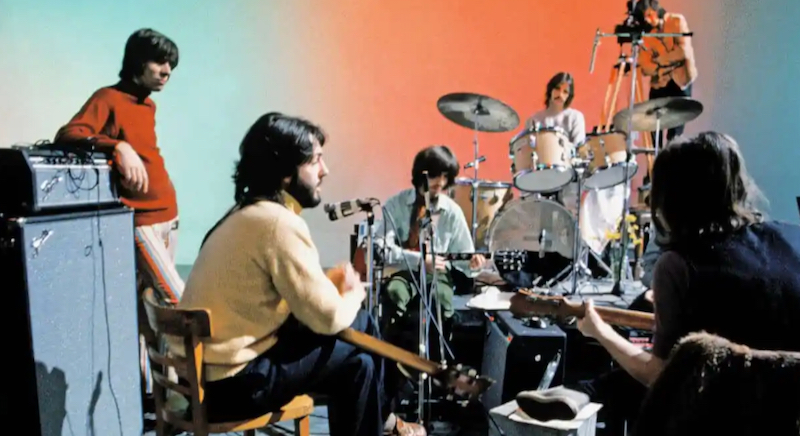Humming along to “Eleanor Rigby,” I began listening more acutely to the astounding lyrics of this Beatles song from 1966. How profoundly insightful their music was when it came to the the human condition from a psychological point of view. The Beatles were the pop psychologists of their times!
“Eleanor Rigby picks up the rice in the church where a wedding has been. … All the lonely people, where do they all come from?” Such heartfelt understanding, rolled into a simple song.
Paul McCartney & John Lennon, a formidable writing duo — arguably the greatest of their time — grasped the pain, even the horrors endured during the average human life. As well as the subtle joys. Heartache, suffering and longings, delivered via superb lyrics and memorable melodies.
It would hard to meet anyone from the era who wouldn’t know the lyrics and tunes to at least some of their songs. What is interesting is that most people, when asked about the Beatles, will readily sing you one of their more melancholy songs.
“Yesterday,” a McCartney classic, probed the heartbreak of loss with effortless lyrics that include, “Yesterday, all my troubles seemed so far away / Now it looks as though they’re here to stay / Oh, I believe in yesterday.”
This universal favorite underscored haunting feelings of grief, piercing the collective unconscious of human beings around the world.
In the early 1960s when the Beatles launched their career in the UK and shortly after in the States, catchy songs such as “She Loves You” and “I Want to Hold Your Hand” promoted familiar themes of romantic love. These pop songs were hailed by millions, affirming a collective belief that love could conquer all. The early Beatles spoke to the fundamental importance of idealized relationships, reflecting a childlike yearning for a happy ever after. Delivered by four handsome young men full of humor and talent.
It wasn’t long, however, before psychologically motivated lyrics and more challenging music entered the repertoire.
Albums such as “Rubber Soul” now included poignant songs addressing loneliness and depression, interspersed with relational hope and empathic lyrics. “Nowhere Man” from that album is a great example:
“He’s a real nowhere man / Sitting in his nowhere land / Making all his nowhere plans for nobody,” John Lennon wrote (referring to himself). “Doesn’t have a point of view / Knows not where he’s going to / Isn’t he a bit like you and me.”
As with Picasso, some of the group’s artistic periods proved both experimental and developmental. Members of the Beatles were experiencing challenges within their own romantic relationships and with each other.
Many agree the Beatles’ psychedelic period offered glimpses into their unconscious.
“Sgt. Pepper’s Lonely Hearts Club Band,” released in 1967, followed by the so-called White Album, burst outside the confines of previous rock albums, testing limits and themes like no other bands at that time or perhaps even since.
The maturing Beatles, while still concerned with pathos in the lives of individuals, began exploring darker parts of the human psyche. Songs including “A Day in the Life,” “She Said She Said,” “Piggies” and later “Maxwell’s Silver Hammer” revealed unpleasant aspects of the human psyche. Narcissism and greed were recurring themes.
Many agree the Beatles’ psychedelic period offered glimpses into their unconscious, with complex lyrics in songs such as George Harrison’s “Within You Without You”:
“We were talking about the space between us all / And the people who hide themselves behind a wall of illusion / Never glimpse the truth, then it’s far too late, when they pass away. … Try to realize it’s all within yourself / No one else can make you change / And to see you’re really only very small / And life flows on within you and without you.”
The Beatles remained true to their explorations of the psychology of the human condition, highlighting the tension of opposites, including guilt, shame, anger and profound loneliness.
Abandonment was another theme, drawing on the Beatles’ own childhoods. This, too, touched a chord in the hearts of their listeners.
“She’s Leaving Home” produced a brilliant set of lyrics addressing the impact of depression on the psyche. It tells of a young woman who tries to cope with loss of identity while finding the courage to run away from home, “leaving the note that she hoped would say more.” Resulting in confusion from the well-meaning family left behind. So often experienced when necessary moments of change arrive.
Change and a final transformation came to the Beatles themselves, of course. The band’s breakup was foreshadowed in their third feature film, Michael Lindsay-Hogg’s “Let It Be,” capped by the Beatles’ memorable 1969 rooftop performance at their Apple Corps headquarters. A half century later, director Peter Jackson turned the raw footage of the “Let It Be” sessions into the superb streaming-video series “Get Back,” released last Thanksgiving. Both films documented the painful yet still humorous group interactions that soon led to their split, after the recording of “Abbey Road.”
“Eleanor Rigby” then can be seen as the portal from which came a wealth of songs that upon close inspection have underlying psychological undertones — with insights far ahead of their time. While clearly recognizing the depth of such brilliance, few fans of the day realized just how profoundly connected to the collective unconscious these four young men really were. Their songs remain indelibly imprinted for all time on the psyche of humans across the globe.
